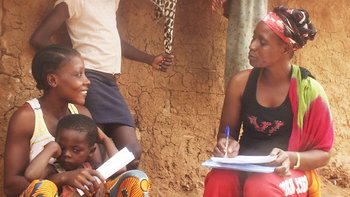“The best is the enemy of the good,” wrote Voltaire in 1770, quoting an old Italian saying. Unfortunately we had to wait for a couple of hundred years before Voltaire's aphorism started to be taken seriously in the humanitarian sector.
The Emergency Capacity Building (ECB) Project published the Good Enough Guide: Impact Measurement and Accountability in Emergencies in 2007. Why “Good Enough”? I was working with the ECB at the time, and we could see that field staff felt that existing impact and accountability mechanisms, while well-designed, didn't acknowledge the challenging reality of a sudden-onset emergency.
The Good Enough approach meant acknowledging that, in an emergency, a simple approach may work better than a complicated one. Instead of aiming for a perfect score – and as a result falling far short of perfect! – the first Good Enough Guide provided a simple and practical set of tools that were good enough to do the job. It wasn't intended to replace accountability initiatives that already existed, but could easily be incorporated into agency practice.
Our intuitions were right: the Good Enough Guide was a runaway success, the most popular book in Oxfam Publishing's catalogue, and can still be found in country offices around the world today. Years later, however, I feel that the humanitarian community still hasn't learnt the lesson of Good Enough. Many of our learning resources assume that our field staff have a level of knowledge, access to resources, and time that in reality they often lack.
In 2012 discussions between the ECB Project and the Assessment Capacities Project (ACAPS) gave rise to the idea of a Good Enough Guide for humanitarian needs assessment. The humanitarian community had already recognised that needs assessments are essential for effective responses.
Thanks to the efforts of IASC member agencies, supported by specialist organisations such as ACAPS, a range of technical guides had been developed – but nobody had written an entry-level handbook on how to plan and implement an assessment.
I began working on this Good Enough Guide in July 2012, and it's finally being published this week – nearly two years later! You might ask what on earth took us so long, and that's a good question. One reason why the first Good Enough Guide was a success was that it was the product of extensive consultation with field staff and collaboration between agencies. This ensured that the guide spoke to staff needs, and also created the buy-in needed for successful circulation and use in the field.
We wanted a similar approach for this second Good Enough Guide, to make it as useful as possible for the main target audience: national field staff carrying out assessments in the early days and weeks following a disaster. In addition to getting feedback from experts on the October 2012 first draft, we held a series of consultations at field level, involving over 150 individuals and organisations in total.
The huge amount of time and effort this took to organise was worth it, as our final draft was much stronger. Although by this time the ECB Project had closed down, the commitment of key participants in member agencies kept the process going. The final draft went back to the field as a pilot and – despite the fact that 2013-2014 was one of the most challenging periods the humanitarian community has faced – we had a publication version ready by the end of 2014.
The Good Enough Guide doesn't explain every single activity that our staff might need to carry out during an assessment, but it guides them through the assessment process, provides a series of tools to help them at each point in that process, and points them to further resources if they need them. It was designed for assessments in the first few weeks of an emergency, but the principles and practices are appropriate for any kind of assessment.
The Good Enough Guide isn't trying to replace existing sector-specific guides; instead we hope it will be a starting point for staff wanting to improve their skills. We think this guide will become a vital resource for field staff that are asked to carry out needs assessments, as well as for agencies Looking for training material to develop their staff skills. Is it perfect? Of course not. But it's good enough.

